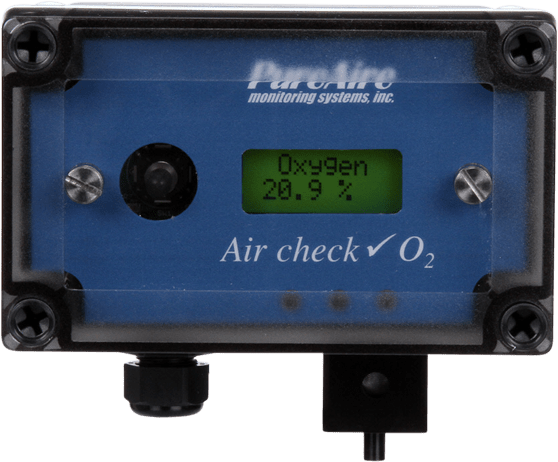OLED

Smartphones and high-definition televisions rely on LED lights. Innovations in organic LED, known as OLED, improve the resolution of smartphone screens and lower the manufacturing cost. As manufacturers invest in OLED, they must also invest in technologies that make the workplace safe by detecting against leaks of inert gases used in the manufacturing process.
OLED screens come with a richer contrast and have a better quality than LED screens. With television screens, OLED screens have the unique ability to curve to reflect the eye’s natural curve rather than appear flat. This creates a more immersive viewing experience.
To make OLED screens, organic substances are transferred onto a screen using a carrier gas. Since nitrogen is low cost and widely available, as it’s naturally found in the air, it’s frequently used with OLED manufacturing. Many OLED manufacturing facilities use a nitrogen gas supply or nitrogen generator which captures the nitrogen from the air. This ensures the plant can operate at maximum productivity — with no delays due to shortage of materials — and as such, a generator helps to keep the end costs down.
Having nitrogen generators on hand is not without risk, however. Nitrogen depletes oxygen which is why it’s so useful in OLED manufacturing — so if the generator or supply lines develop leaks, ambient oxygen levels will tumble. Workers cannot tell there’s anything wrong, because the gas has no smell or color.
As nitrogen leaks, it pushes out oxygen in the room in much the same way that it flushes oxygen particles from an OLED screen. Eventually, oxygen levels will drop to the point where there’s not enough oxygen in the air. All parts of the body require oxygen to operate. Oxygen deficient air robs the blood of necessary oxygen and causes the brain to shut down. When the lungs can’t get enough oxygen, death by suffocation occurs. Employees can succumb to death with as little as a couple breaths of oxygen deficient air.
OLED manufacturing facilities must educate workers on the risks of a nitrogen leak and monitor for leaks by tracking the levels of oxygen in the air. Oxygen monitors track the percentage of oxygen in the air and remain silent as long as oxygen is within normal range, which hovers around 21 percent. When levels of oxygen fall to the critical threshold of 19.5 percent, an alarm sounds that gives workers plenty of time to evacuate before they suffer negative health effects.
PureAire makes some of the industry’s leading oxygen monitors, which comes with two levels of built-in alarm: 19.5 percent and 18 percent. Unlike other oxygen monitors, PureAire’s monitors provide constant readouts even when there’s a shift in barometric pressure, for instance during a thunderstorm.
O2 monitors from PureAire typically last for at least 10 years, and come with a 3-year warranty. Whereas other types of oxygen monitor require quarterly calibration and regular maintenance to continue to perform, PureAire’s monitors need no such maintenance to perform as expected. As such, they are a top choice for manufacturing facilities that want to mitigate the health hazards of nitrogen gas exposure and pay for themselves in just a couple years.
To best protect the facility, oxygen monitors should be installed anywhere nitrogen is used or stored and signs should be posted that alert workers to the risk of nitrogen leaks. Save money and enjoy peace of mind by protecting your facility with top quality oxygen monitors that provide digital readouts, to assure workers that everything is operating properly. Explore oxygen monitors from PureAire and protect your business today.


